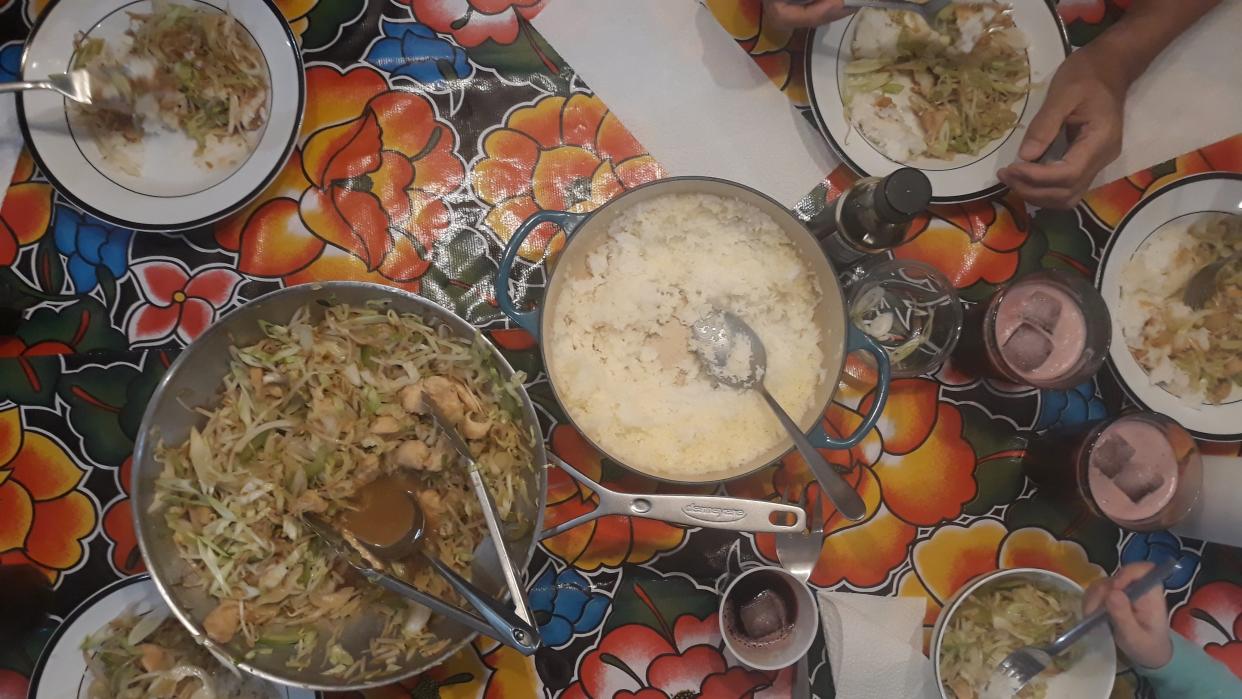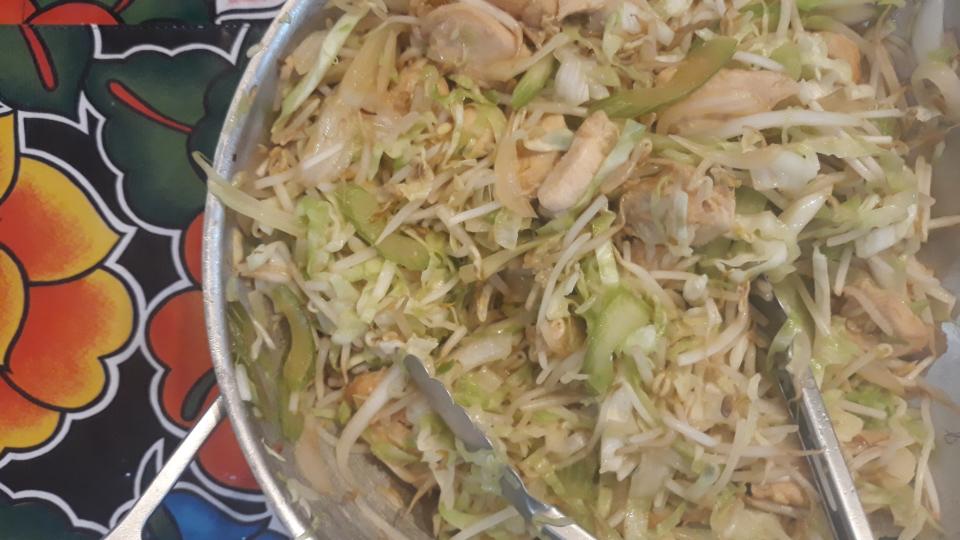How chop suey became a staple of my Sonoran family's kitchen — and a super easy recipe

One dish I grew up eating from my mother’s kitchen may not fit the expected Sonoran profile of golden fried beef and potato tacos, machaca con huevos, tamales and carne asada. However, this noodle dish is just as typical of Hermosillo as the world famous Sonoran doggos.
I'm talking about chop suey. Yes, the same chop suey found in every Chinese-American restaurant from coast to coast. What's interesting is that this dish doesn’t have much of a home presence in American households the way it does in Sonora, and even in Mexico, this homecooked noodle dish is limited mostly to home kitchens in Hermosillo, much in the same way a taste for root beer and hot dogs was left behind due to foreign investment, mining and railroads.
The story of Chinese immigration into northern Mexico is much the same as their story in the western United States. There was a need for cheap and plentiful labor to lay railroad tracks, cut tunnels through mountains and dig precious metals out of mines. Mexico in the late 19th century didn’t have this cheap and plentiful labor, nor did it have the funds for these desired modernizations.
American and European investments made the realization of extensive mining and necessary railroads possible, mostly on the backs of Chinese immigrants, mainly from the Pearl River Delta region in Guangdong province in southern China.
Early Chinese immigrants into Mexico were arranged through the Tongs in San Francisco, halls which served as gathering places for immigrants, as well as provided job placement and housing. Tongs also provided protection for a workforce which was portrayed as bringing down American wages with their willingness to work for less than livable wages, used as scabs to break through mining strikes and blamed for general drunkenness, corruption and disease wherever it was found.
Better than ones you could buy: Make chicken lettuce wraps better than P.F. Chang's with this easy, customizable recipe
Unfortunately, it was not only Chinese labor that was imported into Sonora, but anti-Chinese sentiment as well. The political discourse of the time both praised the great ability of Chinese laborers despite their small stature and weak appearance, then quickly pivoted to decry their predilection for gambling and vices of all kinds, declaring a need to protect Mexican women from them, lest they be corrupted.
Mexico was for Mexicans— so said the slogan of the time. Or for Anglo capitalists, but absolutely not for the Chinese. It is not without irony that the anti-Chinese sentiment in Mexico in the late 19th and early 20th centuries so very much mirrors the anti-Mexican sentiment felt in the United States for so long, even mirrored by the expulsion of Chinese immigrants from Mexico in the 1930s.
Pockets of Chinese immigrants remained within Sonora, even after the forced expulsions. As most were male, intermarriage with Mexican women occurred, and many integrated into the community. One such man, Abelardo Juanz, and now his descendants, operate one of the longest running Chinese restaurants in Hermosillo, Restaurante Abelardo, where chop suey is one of the most beloved dishes.
It was that kind of intermarriage, the welcoming of someone into a family, despite the rhetoric, which allowed for that dish to eventually make its way into my mom’s kitchen in Hermosillo in the 1980s, and to many other kitchens, becoming a staple and a comfort food for that outlived the prejudice.
Make it right: The 'secret' recipe for Sonoran chorizo I guarded for a decade
How to make Mexican-style chop suey
The recipe presented here is a blend of traditional Chinese technique and the simplified style of chop suey found in Hermosillo. While chicken is used here, as was most typical from my mother’s kitchen, pork or beef would be just as satisfactory — or even a return to the dish’s origins by using offal.
To more easily cut the chicken to the necessary thinness needed for quick cooking, partially freeze the chicken breast till it is firm, but not frozen solid, approximately 30 minutes. Slice across the grain, and cut into quarter inch slices, about the thickness of a pencil. Cut the chicken further into bite size pieces.
Marinating the chicken in soy sauce, oil and cornstarch is a method called velveting, which produces a more flavorful and tender chicken and prevents the dryness that can occur when stir frying.
If you're lucky enough to own a wok, a rarity in an Hermosillense kitchen, be sure to use the proper technique for oiling and deglazing the concave cookware. Liquids should not added directly to the bottom, but around the perimeter of the bowl.
Recipe: Chop suey Hermosillense de pollo

Unlike the heavily sauced chop suey found in Chinese-American restaurants, those typically found in Hermosillo are lighter, a bit crunchier and overflowing in bean sprouts. It is a refreshing version you may just prefer.
Makes: 4 servings
Ingredients:
For the chicken:
1 teaspoon vegetable oil
1 tablespoon soy sauce
1 teaspoons cornstarch
1 pound chicken breast, cut into ¼-inch slices
For the Chop Suey:
Cooking oil, as needed
1 small white onion, ¼” sliced
2 stalks celery, ¼” sliced on the bias
¼ head of green cabbage, finely shredded
12 ounces mung bean sprouts, rinsed very well
1 tablespoon dry sherry vinegar
2 tablespoons soy sauce
1 teaspoon cornstarch
2 cups steamed jasmine rice, for serving
Preparation:
To velvet the chicken: In a medium bowl, mix together oil, soy sauce and cornstarch and whisk into a smooth slurry. Add chicken and massage the slurry into the meat until most of the liquid has been absorbed. Allow to marinate for 20 minutes at room temperature.
Heat a wok or large deep pan over medium high heat. At the first sign of white smoke coming from the wok, swirl in 2 tablespoons of oil around the perimeter and gently place the marinated chicken in the wok in a single layer. Cook for 15 to 20 seconds, and turn as soon as the chicken releases from the pan. Cook for an additional 15 seconds, or until the chicken’s surface is no longer pink. Remove chicken from wok and set aside.
Immediately add onions and celery to the hot wok, stirring to prevent sticking. Once softened, after approximately 2 minutes, add cabbage and continue to cook while stirring. After 2 minutes of stir frying, add bean sprouts and stir well to combine all ingredients. Cook until bean sprouts are wilted, but retail some crunch, about 5 minutes or so.
Return chicken to the pan to finish cooking for about 2 minutes, then deglaze with dry sherry vinegar. Mix together soy sauce and cornstarch into a smooth slurry. Add to the pan and turn ingredients to coat. Cook for an additional 1 or 2 minutes to remove the taste of the cornstarch and allow to thicken.
Serve chop suey over a bed of steamed white rice and season to taste with more soy sauce.
Taste of summer: How to make Sonoran sopa de elote
Questions or comments? Email the culinary team at cooking@azcentral.com. Follow chef Minerva Orduño Rincón on Instagram @cucumbersandlimes.
This article originally appeared on Arizona Republic: How to make chop suey the way my Mexican family does: An easy recipe

